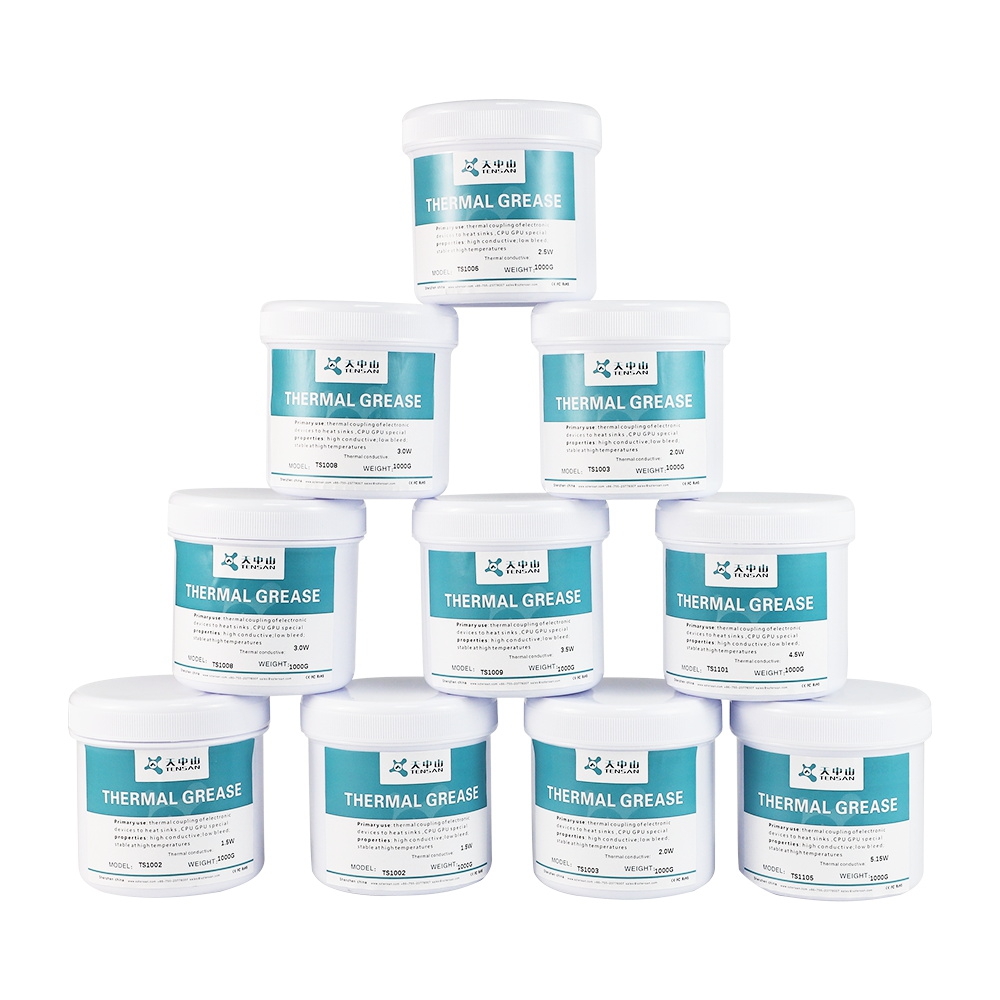Thermal adhesive is a single-component, thermally conductive, room temperature curing silicone adhesive sealant, through the water in the air condensation reaction released low molecules caused by cross-linking curing, and vulcanization into high-performance elastomer, the thermally conductive adhesive also known as organic silicon thermal conductive adhesive, thermally conductive silicone, heat dissipation silicone, heat transfer adhesive, Schneis thermal conductive adhesive, heat dissipation adhesive, cooling adhesive. With good thermal conductivity and a high level of pressure resistance, its role is to fill the thermally conductive silicone film processor and heat sink between the large requirements, which is an alternative to the thermally conductive silicone grease thermal paste plus mica chip binary cooling system products. A thermally conductive adhesive has excellent resistance to cold and heat alternation performance, aging resistance, and electrical insulation performance. It also has excellent moisture resistance, shock resistance, corona resistance, leakage resistance, and chemical medium resistance. It can be used continuously from -60 to 280°C and maintains its performance. Does not swell and has good adhesion to most metals and non-metallic materials.
Advantages.
1、No need for screw fixing, reducing the cost of parts and increasing production efficiency; thermally conductive adhesive replaces the traditional card and screw connection method.
2、Because the adhesive has strong adhesion to metal surfaces and is not easy to peel off, it is widely used for bonding and sealing PTC sheets to aluminum heat sinks.
3, full contact, providing more effective heat dissipation, good operating temperature range - 60 to 280°C, short-term resistance to 300°C high temperature.
4、High dielectric strength to ensure electrical insulation characteristics; single component, easy to use.
5, elastic bonding, shockproof, shock-absorbing, can be used in vibration source electrical equipment.
6, fast bonding speed, strong adhesion, long-lasting adhesion; suitable for different product design and process
Applications.
1、Mainly used in the CPU heat sink, heat dissipation between thyristor, chip and heat sink, heat dissipation of iron soleplate
2、Used for thermal conductivity, heat dissipation, and insulation between heat sink and CPU. Such as computers and related equipment, audiovisual audio, electronics, electrical appliances, etc.
3、Used for various high-powered need heat dissipation. Heat transfer in the relevant electrical appliances such as semiconductor refrigeration tables, drinking fountains, electric kettles, television amplifier tube, and heat sink between
4、Used for bonding and heat conduction on high precision DVD decoder boards, heat conduction of transformers and electronic components fixed, followed by filling;
5, LED driver module and shell of heat dissipation bonding; high-power LED floodlights, LED street lights, LED power supply, LED underwater landscape lights, LED point light source, LED indoor downlight, and bracket bonding
Process flow.
1、Clean surface: clean the surface of the object to be bonded or coated, remove rust, dust, and oil, etc.
2、Application of glue: unscrew the cap of the hose, squeeze the glue into the clean surface, make it evenly distributed, and fix the glued surface together.
3、Curing: Place the glued or sealed part in the air and let it cure naturally. The curing process is a curing process from the surface to the internal, within 24 hours (room temperature and 55% relative humidity) glue will cure 2 ~ 4mm depth, if the location of the part is deeper, especially in the parts that are not easily accessible to the air, fully cured time will be extended, if the temperature is lower, curing time will also be extended. Before further processing or packaging of the bonded parts, it is recommended that the user waits long enough for the bond to be secure and integral
